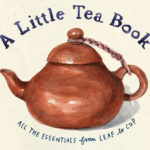Cleaning & Disinfection: Pros & Cons In The Age Of COVID-19

By Aly Cohen, M.D. and Frederick vom Saal, Ph.D – The coronavirus has changed just about every routine in our lives, cleaning now among them. The rational fear of SARS-CoV-2 (COVID-19) spread has led to an enormous growth in the creation and use of a multitude of products that we wipe, spray, and fog, particularly where we eat, sleep, commute, and study. But in the US the history of the use of chemicals has often been followed years later with public health agencies realizing that potential adverse effects on health were downplayed as everyone focused on supposed benefits. This approach has often led to massive overuse of different classes of chemicals, which is the case now with cleaning and disinfecting chemicals. We are faced with a pandemic that is causing unprecedented, exponential use of cleaning and disinfection products, and we already are finding evidence this is leading to downstream health issues in humans and wildlife.
From oven cleaners, air fresheners, toilet bowl cleaners, laundry detergent and softeners, chemical wipes and mildew sprays, the drive to make your home, office buildings, schools and shopping areas sparkling clean and eliminate germs has become a multi-billion-dollar industry. Cleaning products and disinfectants are among the most toxic products sold today. In fact, because of their high toxicity, they are the only household products regulated by the Consumer Product Safety Commission under the 1960 Federal Hazardous Substances Labeling Act. Household cleaning products that have known hazardous ingredients will have one of three warning signs:
- Danger (skull and crossbones): could kill an adult if just a pinch is ingested
- Warning: could kill an adult if a teaspoon is ingested
- Caution: will not kill an adult unless an amount from 2 tablespoons to 2 cups is ingested.
However, this 60-year-old law for determining poison risk is grossly outdated, since many modern household cleaning and disinfectant products can kill you. Many newer products are particularly dangerous to have around children, whose increased sensitivity to their toxic effects was not taken into account in the 1960 law. More than 300 children are treated for poisoning from these products each day in emergency departments across the United States, according to the US Centers for Disease Control and Prevention (CDC), with, on average, two children dying. In fact, accidental poisonings from cleaners and disinfectant has increased by 20% in the first quarter of 2020 as compared to rates from 2018 and 2019, according to one CDC report. Researchers believe the increase coincides with stay-at-home orders and guidelines to clean hands and surfaces to prevent COVID-19 infection.1
Disinfecting Versus Cleaning
One of the most important ways to reduce exposure to some of the strongest, more toxic chemicals is to first decide how aggressively you need to clean vs. disinfect! For example, cleaning refers to the removal of dirt and germs from surfaces, but does not necessarily kill germs. BUT, by removing them, it lowers their numbers and the risk of spreading infection (the amount of virus you are exposed to matters). Removal of germs, the vast majority of which cause no harm to human health, can be done with products that are a lot less harmful to the human body than stronger chemicals used to remove infectious bacteria and viruses. For simple cleaning, we can use safe, effective cleaners such as bar and liquid soap made without fragrance, coloring, preservative, and that can contain anti-bacterial chemicals that are not necessary for basic cleaning.
Disinfecting, on the other hand, refers to using chemicals to kill germs on surfaces, but this involves using chemicals with much stronger, and potentially lethal, ingredients. Disinfectants are chemicals that can have serious effects on human health that may become apparent after short-term as well as long-term use. Bleach is one example, where this strong disinfecting chemical can cause short term health issues like cough (bronchospasm), shortness of breath, and even trigger an asthma attack. Long-term use may increase risk of thyroid gland dysfunction and other endocrine disorders if protection for skin contact, inhalation, and ventilation of the use area, are not managed properly.2 The important point is that unlike simple cleaning products, disinfectants are designed to kill organisms.
With the Covid-19 virus, disinfection is critical to reduce spread of the virus, especially on door handles, light switches, table and counter surfaces, and arms of chairs, so both a diluted household bleach solution or an alcohol solution (think “rubbing” alcohol or isopropyl alcohol, which are not drinkable) with at least 70% alcohol should be effective.
- Diluted household bleach solutions should be used with extreme care to effectively disinfect SARS-CoV-2 on a variety of surfaces, which requires people to follow manufacturer’s instructions for application and proper ventilation. Check to ensure the product is not past its expiration date, which could reduce strength and effectiveness. Unexpired household bleach will be effective against coronaviruses when properly diluted. Never mix household bleach with ammonia or any other cleanser.
- Avoid handling bleach if you have a history of asthma, COPD, emphysema or other lung conditions. Use skin protection (rubber gloves), eye protection (clear mask, eyeglasses, sunglasses, or swim goggles) when handling bleach, and make sure the room is well ventilated and/or windows are open, and no children or pets are present.
- The Center for Disease Control (CDC) in the US recommends this bleach solution mixture:
- 5 tablespoons (1/3rd cup) bleach per gallon of water or
- 4 teaspoons bleach per quart of water.
Links to EPA’s ‘List N’ and CDC list for effective disinfecting products:
Long-term use of a strong disinfectant should be carefully considered. If it is not necessary to disinfect the area, you can use a variety of safe, effective cleaning products. Nowadays, there is never a reason to use unsafe products, there are just too many good products available! Look up safe products at EWG’s Guide to Healthy Cleaning …or just make your own, using simple ingredients such as white vinegar, real lemon juice, sea salt for scrubbing, castile soap, 100% organic lavender oil.
We provide many “do-it-yourself” recipes for making safe cleaning solutions, and also discuss in our newly released consumer guidebook, Non-Toxic: Guide to Living Healthy in a Chemical World, the reality is that in the U.S., with the exception of products with older known hazardous ingredients, today, manufacturers of cleaning products and disinfectants are NOT required to list the full ingredient panel of their products. Cleaning products producers are also not responsible for supplying information about any testing or toxicity findings for the products that they create, because in the U.S., they are protected as a trade secret. In the event of an accidental poisoning, even poison control centers are unable to access information about the ingredient details of the product ingested. While industries argue that protecting their profits from products by keeping ingredients secret is essential, not informing consumers about chemicals in these products that have been shown to cause harm is unacceptable.
Health Effects from Cleaning Product Ingredients
Researchers have shown health effects in both animal and human studies for several classes of cleaning ingredient chemicals. Phthalates, a class of chemicals added for fragrance or ‘perfume’, are intended to increase the shelf life of the product’s odor. Research shows that phthalate exposure during pregnancy has been associated with developmental abnormalities in both animal and human studies.3 ‘Anti-bacterial’ chemicals, such as Triclosan, the most widely known antimicrobial, are registered with the EPA as pesticides. Triclosan is marketed under more than a dozen different names, including Microban, Irgasan, Biofresh, Lexol-300, Ster-Zac, Bactroban, and Cloxifenolum. Antibiotic chemicals, such as triclosan, are readily absorbed through human skin and are often detected in blood. In fact, 75% of urine samples4 and 97% of breast milk samples in the United States and Sweden were found to include triclosan. After only one shower using a body wash containing triclosan, researchers found blood levels of triclosan immediately increased! Paraben and quaternary ammonium compounds are among other classes of chemical additives raising concern, especially now with the coronavirus. These unregulated chemicals may pose serious short and long term health risks, and they are particularly dangerous for fetuses and should be avoided by pregnant women.
Cleaning and disinfectant products are now being used in greater quantities (using ‘foggers’), over a wider variety of surfaces, and are used among workers (occupational risk) and lay people (teachers, administrators e.g.), who may not have experience using these stronger chemicals. Perhaps of greatest concern is the now pervasive use of many powerful disinfectant chemicals in environments such as schools and day care centers where the evidence for safety has yet to be fully elucidated, and where vulnerable students with history of asthma, or vaping may likely experience increased risk for lung injury from repetitive, long-term exposure, thus placing them at increased risk of dying from COVID-19.4,5
And the effects of constant spraying of disinfectant chemicals in outdoor venues, such as restaurants, sidewalks, over neighborhoods (via drones) and public spaces has not gone unnoticed. Adverse effects on the environment and an increase in death of wildlife is yet another downstream effect from the pervasive use of many chemical cleaners, which make their way into local bodies of water (streams, lakes, aquifers), and according to the WHO, can deleterious effects on our natural surroundings, as well as making its way into drinking water for humans and wildlife.6
General Rules for ‘safe cleaning’?
The ‘less is more approach’ is always best. Buy and use fewer products. Dispense with the use of fabric softener, dryer sheets, and air fresheners. This is the first step to eliminate hundreds of undisclosed chemicals that may be harmful to your health. Clearly, you cannot rely on statements on product labels to assess the safety of these products, since they are essentially unregulated. Buy the products with the least ingredients in the product, and with most ingredients you can recognize.
In general, it’s wise to avoid products that contain ammonia, chlorine bleach, quaternary ammonium or “quats”, and non-chlorine bleach substitutes such as oxygen bleach, which are corrosive and irritating to skin. Avoid use of air fresheners, carpet powders, cleaning products with bleach and other lung irritants, and products containing fragrance or perfume. Limonene and other citrus fragrances are often added to cleaning products and should be avoided because of their ability to form formaldehyde when used with ozone in the air. Also, look for companies that are reputable for not only having ingredients safe for the planet (no microbeads or nanoparticles used for instance), but also use ingredients safe for human health. Look up your cleaning products on the internet or just make your own!
Bottom Line:
Cleaning products in the U.S. are under minimal regulatory oversight and contain chemicals known to cause many health issues. Avoid buying harmful cleaning products to begin with, purchase products checked on reliable online sources, or make your own cleaners with basic, inexpensive natural ingredients. Open windows to clean out odors, spot clean spills and messes at the source, and throw in some old-fashioned elbow grease instead of relying on a toxic chemical fix. And finally, do not try to mask odors with air fresheners that release toxic chemicals into the air you breathe in your home and at work. As we move into this ‘brave new world’ with COVID-19, be judicious with using disinfectant chemicals over the use of cleaning agents, and consult vetted resources, such as the Environmental Working Group’s list for safe cleaning products as well as the CDC and EPA lists for effective disinfectant products.
About the Authors
Aly Cohen, MD is a board-certified rheumatologist, integrative medicine, and environmental health expert, and creator of the environmental health and wellness platform, TheSmartHuman.com. She is working to create ‘environmental health’ curricula to be available to high school students nationally. For more information, go to Dr. Cohen’s environmental health and prevention platform, TheSmartHuman.com and follow on Facebook, Twitter, and Instagram, The Smart Human, and sign up for The Smart Human newsletter and listen to the newly launched, The Smart Human podcast.
Dr. Frederick vom Saal, PhD is professor of neuro- and reproductive biology, who’s decades of research is largely responsible for the removal of the endocrine disruptor, bisphenol A (BPA) from plastic baby bottles in the U.S. in 2012.
Dr. Cohen and vom Saal’s new guidebook, in the Dr. Weil’s Healthy Living Guides series, Non-Toxic: Guide to Living Healthy in a Chemical World, published by Oxford University Press is available now, in stores and online. This new book is an invaluable resource to living cleaner and greener in our modern environment, and teaches readers how to reduce chemical and radiation exposures by recognizing potential threats. Non-Toxic is designed to be referred to again and again for its relevant, cost-effective, and practical ways to reduce exposure and thereby lower risk for developing a variety of environmentally associated illnesses, to assist in improving people’s health and even prevent illness, including COVID-19.
- Stobbe M. US lockdowns coincide with rise in poisonings from cleaners. Associated Press. https://apnews.com/5621611ac1e1c04de36d5b6dfb0b6422. Published 2020. Accessed2020.
- Rogan WJ, Paulson JA, Baum C, et al. Iodine deficiency, pollutant chemicals, and the thyroid: new information on an old problem. Pediatrics. 2014;133(6):1163-1166.
- Dutta S, Haggerty DK, Rappolee DA, Ruden DM. Phthalate Exposure and Long-Term Epigenomic Consequences: A Review. Front Genet. 2020;11:405-405.
- Wittenberg A. PANDEMIC: Toxic cleaners pose new risks as schools reopen. Environment & Energy News. https://www.eenews.net/stories/1063709823. Published 2020. Accessed August 16, 2020.
- vom Saal F, Cohen A. How toxic chemicals contribute to COVID-19 deaths. Environmental Health News. https://www.ehn.org/toxic-chemicals-coronavirus-2645713170.html. Published 2020. Accessed July 2, 2020.
- Roth A. Wildlife deaths from coronavirus disinfectant use alarm scientists. National Geographic. https://www.nationalgeographic.com/animals/2020/08/disinfectant-public-cities-pandemic-urban-wildlife-cvd/. Published 2020. Accessed August 17, 2020.










